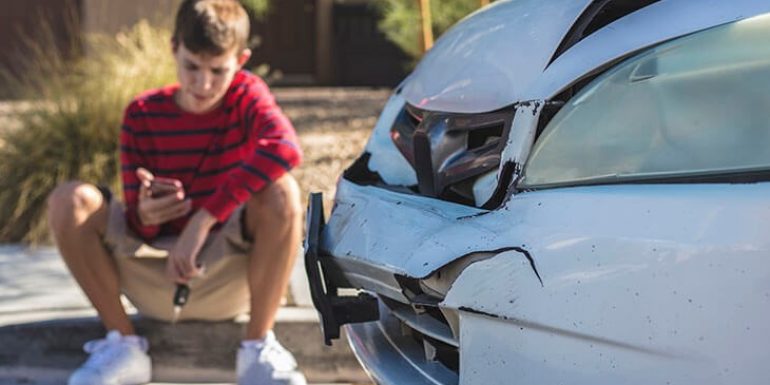Everything You Need to Know About Teenage Driver Motor Vehicle Crashes

Author: Dordulian Law Group
Published: July 14, 2021
www.dlawgroup.com
There are a lot of teenage drivers on our nation’s roads and highways. A report from the National Highway Traffic Safety Administration (NHTSA) confirms that young drivers – a person 15 to 20 years old – account for approximately 5.3% of all licenses. That equates to roughly 12 million young drivers on the road, and that number is anticipated to grow. As AAA of Southern California reports, more teens are obtaining a license before age 18 – over 60% in 2019, representing an 11% increase since 2012.
With so many teenage and young drivers on the road, the potential for car accidents is increased significantly. As the AAA Foundation reports, drivers ages 16-17 continue to have the highest rates of crash involvement, injuries to themselves and others, and deaths of others in crashes in which they are involved (conversely, drivers ages 60-69 were the safest drivers by most measures examined).
The Centers for Disease Control and Prevention (CDC) reported that almost 2,400 teens in the United States aged 13-19 were killed in motor vehicle crashes in 2019, while about 258,000 were treated in emergency departments for injuries suffered in such collisions. Those statistics mean that every day, about seven teens aged 13-19 died as a result of motor vehicle crashes (and hundreds more were injured).
Furthermore, the cost of motor vehicle crash deaths among teens 15-19 years of age is staggering. About $4.8 billion in medical and work loss costs were recorded for teenage driver crashes that occurred in 2018, according to the CDC.
The CDC also confirms the following important teenage driver statistics:
- In 2019, the motor vehicle death rate for male drivers aged 16-19 was over two times higher than the death rate for female drivers of the same age.
- The presence of teen passengers increases the crash risk of unsupervised teen drivers, and that risk increases with each additional teen passenger in the vehicle.
- Crash risk is particularly high during the first months of licensure (data from the 2016-2017 National Household Travel Survey indicates that the crash rate per mile driven is about 1.5 times as higher for 16-year-olds as it is for 18-19-year-olds).
Some additional teenage driver statistics provided by the Insurance Institute for Highway Safety (IIHS) include:
- 52% of motor vehicle crash deaths among teenagers in 2019 occurred on Friday, Saturday, or Sunday.
- Teenage motor vehicle crash deaths in 2019 occurred most frequently from 9 p.m. to midnight (18%), followed closely by the time between 3 p.m. and 6 p.m., and between 6 p.m. and 9 p.m. (both 15%).
- Young drivers are less likely than adults to drive after drinking alcohol, but their crash risk is substantially higher when they do.
The IIHS reports that in 2019, teenagers accounted for 7% of total motor vehicle crash deaths, and about two out of every three teenagers killed in crashes were males. However, since 1975, teenage crash deaths have actually decreased more among males (76%) than among females (64%).
